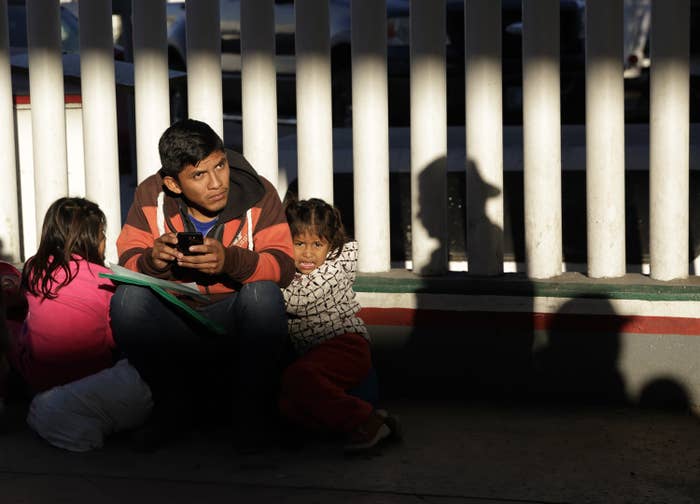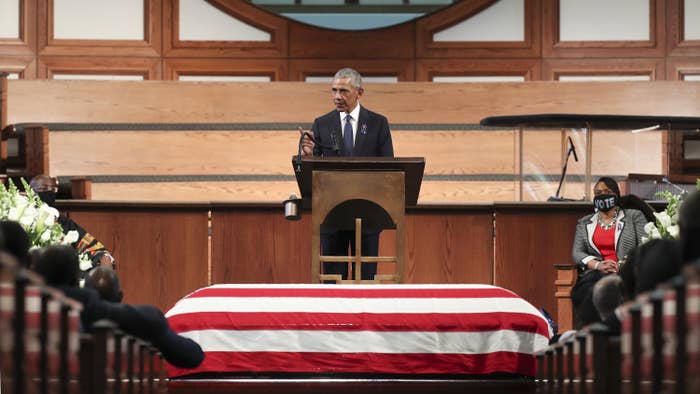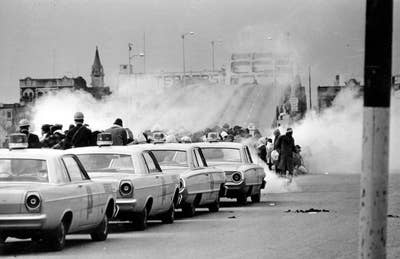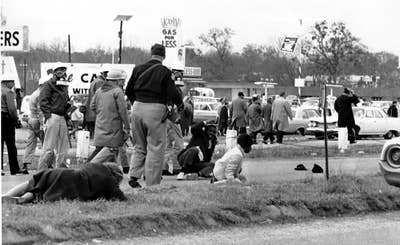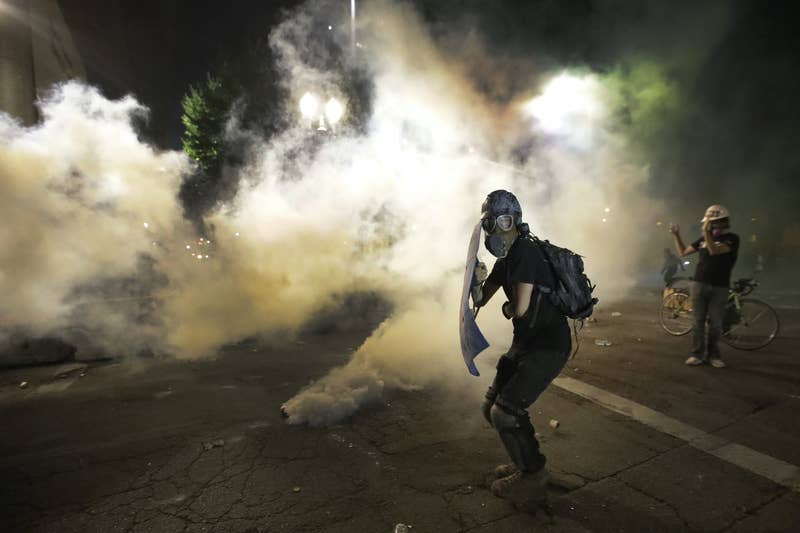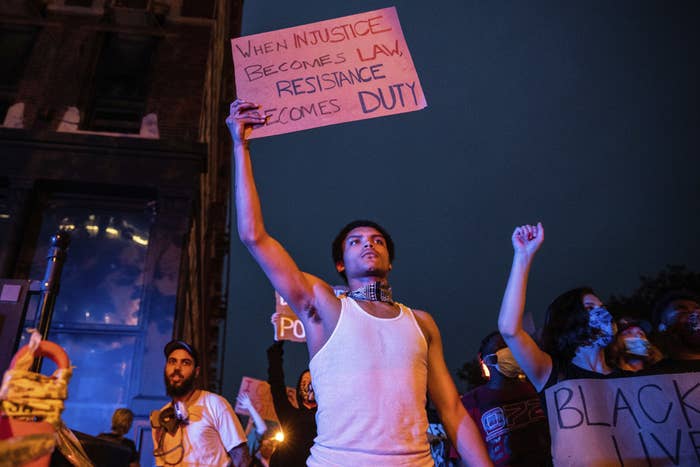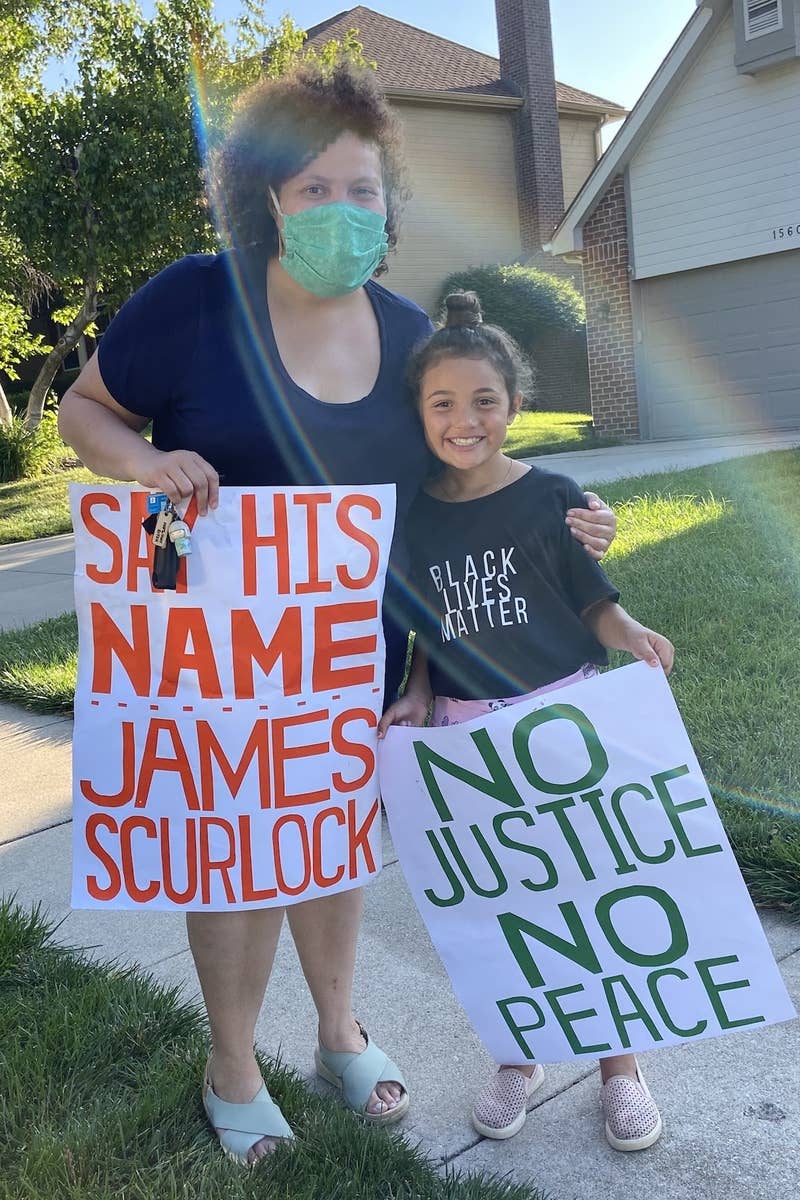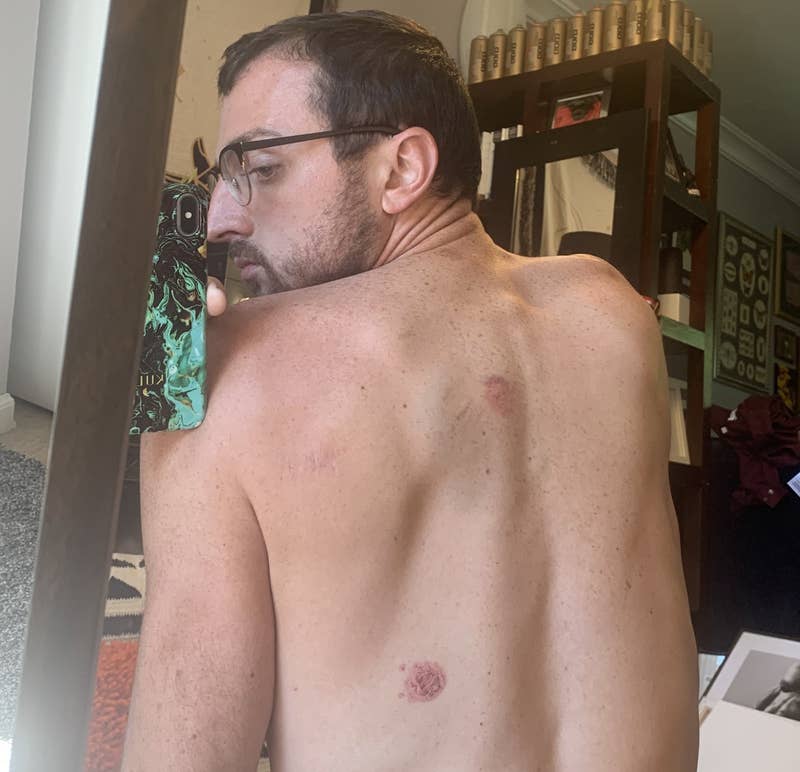The Justice Department announced Wednesday it would send officers to Milwaukee, Detroit, and Cleveland to fight violent crime. Detractors say the federal crackdown is political.
David Mack BuzzFeed News Reporter
Last updated on July 29, 2020
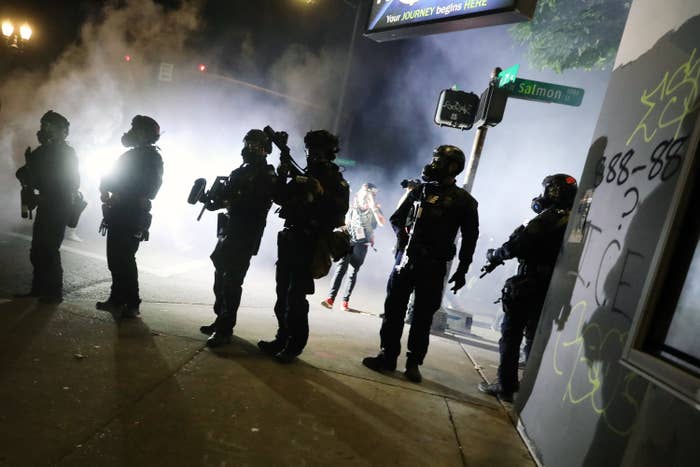
Spencer Platt / Getty Images
The Trump administration has agreed to withdraw federal officers from Portland, Oregon, officials announced Wednesday, following weeks of controversy about their presence in the city.
But the announcement came shortly after the Justice Department said it would send agents to Cleveland, Detroit, and Milwaukee in what it described as a bid to fight violent crime, but which detractors of the administration have dubbed stunts designed to help the President Donald Trump campaign for reelection on a message of law and order.
Oregon Gov. Kate Brown, a Democrat, said the withdrawal in her state came after discussions she had with Vice President Mike Pence about the presence of the officers in Portland, who were ostensibly sent by Trump to restore order to a city besieged by "anarchists," but who Brown and many locals say are themselves an occupying force.
"They have acted as an occupying force & brought violence," Brown said in a tweet Wednesday. "Starting tomorrow, all Customs and Border Protection & ICE officers will leave downtown Portland."
The governor said local state police would still patrol the city's downtown to "keep the peace" and allow demonstrations to continue.
Chad Wolf, acting secretary for the Department of Homeland Security, said in a news release that an "augmented" force would remain in Portland to protect the federal courthouse that had been at the center of protests, but he added that "should circumstances on the ground significantly approve due to the influx of state and local law enforcement, we anticipate the ability to change our force postur
Wolf later told reporters that agency law enforcement personnel will remain in Portland until they are “assured” that the courthouse will not be attacked nightly and that officers would remain “in the area” in case they get any indication that the plan with Oregon officials is not working.
Wolf said Brown reached out to him recently and offered the use of Oregon State Police. “It’s what we’ve been asking for,” he said.
The state police, according to Wolf, will deploy a robust force in the streets surrounding the courthouse along with Portland police officers.
The development seemed to contradict comments made by Trump just hours earlier outside the White House, where he told reporters federal agents were in the city to protect a federal building from "nasty and vicious people."
"Either they clean out Portland — the governor and the mayor, who are weak — either they clean out Portland or we're going in to do it for them," he said.
For weeks, the presence of the more than 100 agents — many wearing camouflage uniforms without any form of identification as they detained people in unmarked vans — has sparked anger both locally in Portland and nationally. Both the offices of the inspector general for the departments of Homeland Security and Justice are now investigating the actions of the federal law enforcement officers there.
The federal crackdown on crime in several states, dubbed Operation Legend, has already seen federal officers sent to Kansas City, Missouri, as well as to Chicago and Albuquerque, New Mexico
As part of what the Justice Department said were efforts to combat gun violence, violent gangs, and drug trafficking, more than 25 federal investigators with the FBI, DEA, and ATF will now be sent to Cleveland, while another 42 will be sent to Detroit and 25 more will go to Milwaukee.
All three cities are run by Democratic mayors, with Trump previously denouncing "Democrat-run" cities.
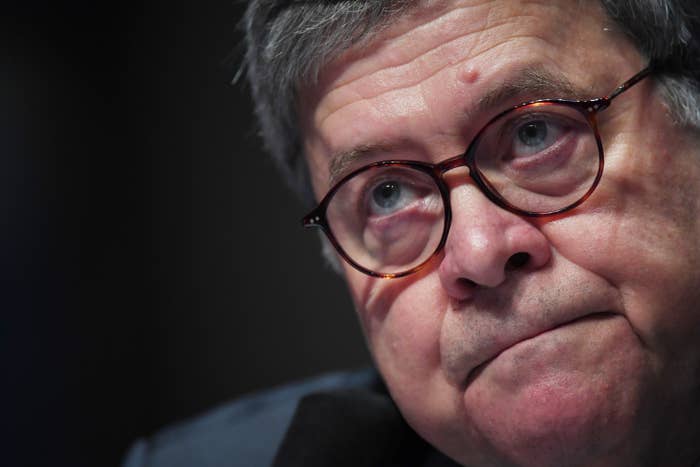
Matt McClain-Pool / Getty Images
Bill Barr at Tuesday's congressional hearing.
At a heated congressional hearing on Tuesday, Attorney General Bill Barr defended the work of federal officers and their presence in Portland, describing attacks on the courthouse there as an "assault on the government of the United States."
“Rioters and anarchists have hijacked legitimate protests to wreak senseless havoc and destruction on innocent victims,” he said.
But Democrats assailed Barr for the federal crackdown, arguing it was politically motivated.
“The president wants footage for his campaign ads, and you appear to be serving it up to him as ordered,” House Judiciary Committee Chair Jerry Nadler said. “You are projecting fear and violence nationwide in pursuit of obvious political objectives. Shame on you, Mr. Barr.”
Hamed Aleaziz contributed to this story.
MORE ON THIS
Donald Trump's Portland Rhetoric Doesn't Match Reality
Last updated on July 29, 2020

Spencer Platt / Getty Images
The Trump administration has agreed to withdraw federal officers from Portland, Oregon, officials announced Wednesday, following weeks of controversy about their presence in the city.
But the announcement came shortly after the Justice Department said it would send agents to Cleveland, Detroit, and Milwaukee in what it described as a bid to fight violent crime, but which detractors of the administration have dubbed stunts designed to help the President Donald Trump campaign for reelection on a message of law and order.
Oregon Gov. Kate Brown, a Democrat, said the withdrawal in her state came after discussions she had with Vice President Mike Pence about the presence of the officers in Portland, who were ostensibly sent by Trump to restore order to a city besieged by "anarchists," but who Brown and many locals say are themselves an occupying force.
"They have acted as an occupying force & brought violence," Brown said in a tweet Wednesday. "Starting tomorrow, all Customs and Border Protection & ICE officers will leave downtown Portland."
The governor said local state police would still patrol the city's downtown to "keep the peace" and allow demonstrations to continue.
Chad Wolf, acting secretary for the Department of Homeland Security, said in a news release that an "augmented" force would remain in Portland to protect the federal courthouse that had been at the center of protests, but he added that "should circumstances on the ground significantly approve due to the influx of state and local law enforcement, we anticipate the ability to change our force postur
Wolf later told reporters that agency law enforcement personnel will remain in Portland until they are “assured” that the courthouse will not be attacked nightly and that officers would remain “in the area” in case they get any indication that the plan with Oregon officials is not working.
Wolf said Brown reached out to him recently and offered the use of Oregon State Police. “It’s what we’ve been asking for,” he said.
The state police, according to Wolf, will deploy a robust force in the streets surrounding the courthouse along with Portland police officers.
The development seemed to contradict comments made by Trump just hours earlier outside the White House, where he told reporters federal agents were in the city to protect a federal building from "nasty and vicious people."
"Either they clean out Portland — the governor and the mayor, who are weak — either they clean out Portland or we're going in to do it for them," he said.
For weeks, the presence of the more than 100 agents — many wearing camouflage uniforms without any form of identification as they detained people in unmarked vans — has sparked anger both locally in Portland and nationally. Both the offices of the inspector general for the departments of Homeland Security and Justice are now investigating the actions of the federal law enforcement officers there.
The federal crackdown on crime in several states, dubbed Operation Legend, has already seen federal officers sent to Kansas City, Missouri, as well as to Chicago and Albuquerque, New Mexico
As part of what the Justice Department said were efforts to combat gun violence, violent gangs, and drug trafficking, more than 25 federal investigators with the FBI, DEA, and ATF will now be sent to Cleveland, while another 42 will be sent to Detroit and 25 more will go to Milwaukee.
All three cities are run by Democratic mayors, with Trump previously denouncing "Democrat-run" cities.

Matt McClain-Pool / Getty Images
Bill Barr at Tuesday's congressional hearing.
At a heated congressional hearing on Tuesday, Attorney General Bill Barr defended the work of federal officers and their presence in Portland, describing attacks on the courthouse there as an "assault on the government of the United States."
“Rioters and anarchists have hijacked legitimate protests to wreak senseless havoc and destruction on innocent victims,” he said.
But Democrats assailed Barr for the federal crackdown, arguing it was politically motivated.
“The president wants footage for his campaign ads, and you appear to be serving it up to him as ordered,” House Judiciary Committee Chair Jerry Nadler said. “You are projecting fear and violence nationwide in pursuit of obvious political objectives. Shame on you, Mr. Barr.”
Hamed Aleaziz contributed to this story.
Donald Trump's Portland Rhetoric Doesn't Match Reality
Jane Lytvynenko · July 21, 2020
Zoe Tillman · July 24, 2020
Craig Silverman · July 17, 2020
Zoe Tillman · July 28, 2020

David Mack is a deputy director of breaking news for BuzzFeed News and is based in New York.
